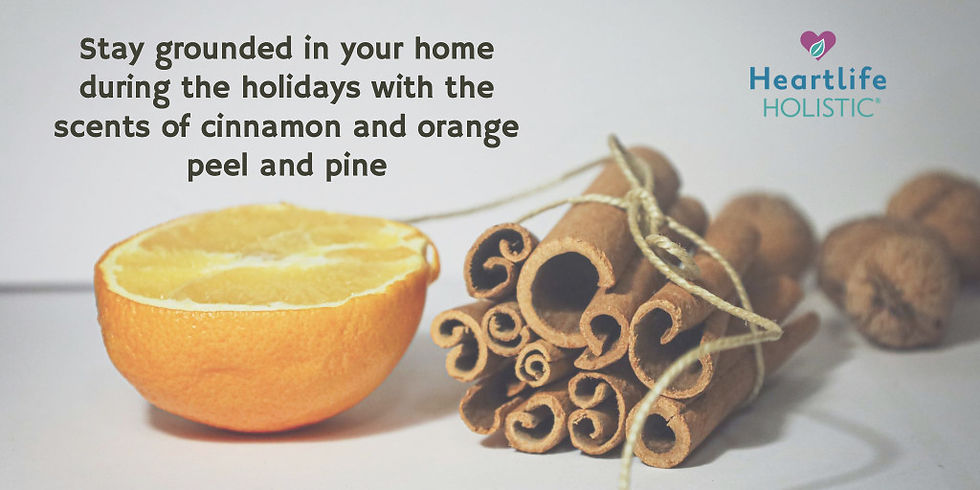Self-Care: Essential Oils for Emotional Support
- Kathy Morelli

- Nov 29, 2018
- 5 min read
Updated: Aug 1, 2025
Self-Care: Essential Oils for Emotional Support

Safety note: Please realize that self-treatment has its limitations. You must seek professional help for any chronic, lingering or severe emotional or psychological symptoms you are experiencing. The use of essential oils for emotional support is discussed here as just one piece of the pie in your healing, as complementary care only. In addition, this website promotes the safe use of essential oils by these methods only: inhalation, intermittent diffusing and safe levels of dilution in a carrier oil for use on the skin. This website does NOT promote the ingestion of essential oils.
Can essential oils be used for emotional support? Is there evidence to back these claims? There is a small, but growing, body of research indicating that essential oils have a positive effect on mood. And research has also focused on the psychophysiological effects of essential oils at the molecular level as well. The studies indicate that there are positive effects and better designed and additional studies are needed.
In 2017, Dr. Dalinda Isabel Sánchez-Vidaña and her research team at Hong Kong Polytechnic University conducted a meta-analysis of the existing research about the efficacy of using essential oils as a complementary treatment specifically for depression. The research team excluded any studies using ingestion methods, but included those studies using inhalation and aromatherapy massage. The team found although the studies had small sample sizes and differing protocols, in 7 of the studies, there was improvement in depressive symptoms. The team concluded that aromatherapy, as a complementary therapy, “…has potential to be used as an effective therapeutic option for the relief of depressive symptoms…” (Sanchez-Vidana et al, 2017).

Lavender is one of the most studied essential oils and also one of the most loved fragrances! A 2013 overview of the studies of lavender’s effects on mood and the the quality of sleep suggest anti-anxiety, calming and soothing effects. The researchers attribute lavender’s effect to its linalool and linalyl acetate constituent content. A 2008 study compared the effects of lavender oil on people staying overnight in the hospital showed that people who had some lavender oil placed near their bed with participants who did not have this intervention, The people who had the lavender oil near their beds had lower blood pressure and overall, slept better than the participants who did not.
How do essential oils interact with the human emotional system? Essential oils are created through a distillation process from concentrated, aromatic substances found in plants. Essential oils are mostly lipid, or fat, soluble. Because of their fatty molecular make-up, EO’s can interact with and be absorbed by our skin and into the bloodstream.

Once an EO is applied to the skin, it takes about 30 minutes to be absorbed. Inhalation is a more direct route to the human nervous system and bloodstream. The essential oil stimulates the olfactory system, which stimulates the limbic system and hypothalamus, the parts of the brain involved in emotion, memory and the hormonal axis. Once the emotional and hormonal parts of the brain are stimulated, the release of neurotransmitters, such as serotonin, takes place and there is a psychophysiological effect. Also, the EO has close contact with the thin mucous membranes around the nose, which enables a faster absorption route to the bloodstream than the thicker skin on the arms and legs. In addition, the inhaled EO can cross into the blood stream via the lungs.
Essential oils, through either method, skin absorption or inhalation, reaches the organs, the kidneys, the liver and the lungs via the bloodstream.
The idea here is, treat essential oils with respect, treat them as plant medicine. They interact profoundly with your mind and body. Use them carefully and sparingly.
For practicality (and to reach your brain quickly!), using an aroma-inhaler with essential oils is a quick way to influence your limbic system and give yourself some emotional support. You can easily learn how to make your own aroma-inhaler.
Tp prevent sensitization, always wear gloves when handling essential oils. Put about a total of 15 – 18 drops in the aroma-inhaler for your use, unless that smells too strong for you, then just use less. I always use less, as I am very sensitive to fragrances, both natural and artificial. To use your blend in your aroma-inhaler, close one nostril and breathe!
Realize you may need to be discreet and considerate of others around you who may have fragrance allergies, as EO can have very potent scents. And, don’t use this instead of your regular medication or therapy! Aromatherapy is a complementary therapy!
Make a blend for yourself including no more than three essential oils whose scents appeal to you. Blends are highly individualized. You may really dislike or really like the scent of one EO. Respect how you feel. And note, too, that sometimes blends work for a while then they stop, so if you notice that, then so just switch.
Some essential oils for emotional support:
For sadness, uplifting essential oils include:
Sweet Orange – eases depressive stress, uplifts, joyful and sunny, relieves negativity
Bergamot – gently uplifting, relaxes the nerves and reduces stress
Chamomile, Roman – relieves irritable, moody depression, dissatisfaction with life
Jasmine – relieves depression due to fear and repression
Lavender – the “Rescue Remedy” of essential oils! Has a sedative and calming effect.
Rose – Eases feelings of abandonment
Spikenard – helps move out dissatisfaction with the self
Ylang Ylang – Fosters feelings of joy in life
Anxiety – calming essential oils include:
Frankincense – emotionally balancing all-around, quiets the mind, promotes emotional healing
Geranium – fosters a sense of security and stability
Lavender – the “Rescue Remedy “ of essential oils! Calming, anti-anxiolytic, (anti-anxiety)
Lemon – Invites expansion and outward energy while at the same time, calming
Melissa – Calms agitated emotions
Neroli – calms the nerves and heart break, supports spiritual and creative work
Grief – to ease the pain of loss:
Clary Sage – used to help one move past melancholy
Cypress – used move one past a loss one has not come to terms with, trauma, transitions
Frankincense – a balancing action on the emotions

Give yourself space to heal and use the many tools available to you. Aromatherapy is just one piece of a larger self-care plan. It takes attention and effort to create and maintain emotional and mental health. Counseling, medications, journaling, DBT, EMDR, Somatic Experiencing®, forest bathing, absorbing hobbies, learning new things, expressive art, good food, exercise, yoga, building community and relationships…these all contribute to well-being.
Go on and create yourself an uplifting life!
References and Bibliography
Fulcher, E. (2012). Aromatherapy Certification Program. Selinsgrove, Pennsylvania: Aromatic Wisdom Institute.
Koulivand, P.H., Khalehgi Ghadiri, M., & Gorji, A. (2013). Lavender and the nervous system. Evidenced-based complementary ad alternative medicine: eCAM, 2013, 681304.
Mojay, G. (1997). Aromatherapy for healing the spirit. Rochester, Vermont: Healing Arts Press.
Sánchez-Vidaña, D. I., Ngai, S. P., He, W., Chow, J. K., Lau, B. W., & Tsang, H. W. (2017). The Effectiveness of Aromatherapy for Depressive Symptoms: A Systematic Review. Evidence-based complementary and alternative medicine : eCAM, 2017, 5869315.
Tisserand, R. and Young, R. (2014). Essential oil safety. Churchill Livingstone Elsevier.



Comments